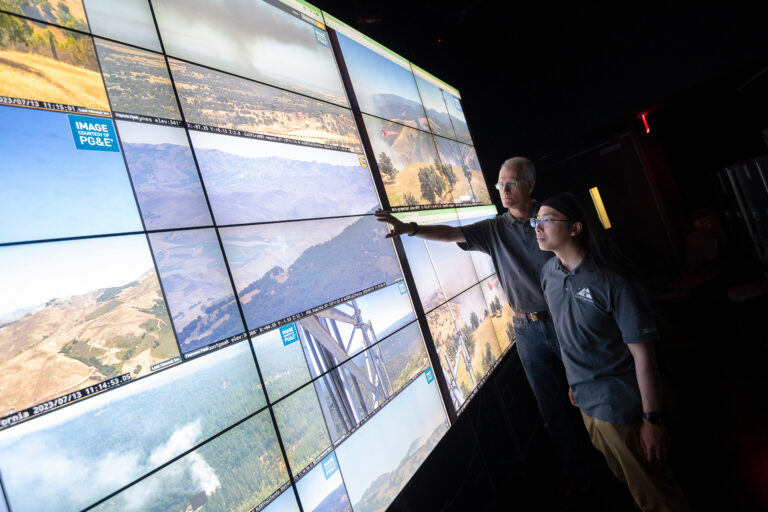The Corporation for Education Network Initiatives in California (CENIC) has named an AI wildfire-detection tool created by DigitalPath, California Department of Forestry and Fire Protection (CAL FIRE) and the University of California San Diego’s AlertCalifornia program the winner of the 2024 Innovations in Networking Award for Public Safety.
AI fire-detection tool
The AI assimilates image data from over 1,060 cameras provided by AlertCalifornia’s network, enabling the effective monitoring and identification of potential incidents. Launched in the summer of 2023, the AI system provides early wildfire confirmation and actionable real-time data to quickly scale fire resources, support evacuations through enhanced situational awareness and monitor fire behavior. The AI platform enables data to drive firefighting decisions.
When the AI spots a potential fire, the system alerts firefighters and provides a percentage of certainty and estimated location for the incident. If the incident is vetted and confirmed by trained watchstanders, firefighters respond quickly to extinguish the fire at the incipient phase.
The California Department of Forestry and Fire Protection
According to the partners, the AI quickly became an important tool for CAL FIRE, and is currently used at all 21 dispatch centers across the state. It is especially effective in spotting anomalies in remote locations and has proven effective at night, even alerting firefighters to potential incidents before 911 calls, UC San Diego says.
“The cameras and AI are revolutionizing wildfire detection, providing invaluable early warnings in both non and densely populated regions,” said Philip SeLegue, staff chief of intelligence of CAL FIRE. “By swiftly identifying fires many times before initial emergency reports, these advanced systems are not just technology, they assist in our mission to suppress 95% of fires 10 acres or less. Every second counts in wildfire response, and AlertCalifornia’s cameras and the AI are proving to be indispensable guardians of our communities’ safety.”
AlertCalifornia’s system is supported by UC San Diego’s advanced wireless network and builds upon the university’s partnership project High Performance Wireless Research and Education Network (HPWREN). AlertCalifornia’s team bridges disciplines and includes researchers from Scripps Institution of Oceanography, Jacobs School of Engineering and the Qualcomm Institute. The program’s integrated system provides stakeholders with real-time access to AlertCalifornia’s images and the ability to view time-lapse histories, significantly enhancing situational awareness and decision-making capabilities.
“AlertCalifornia, CAL FIRE and DigitalPath are very proud to be the recipients of the 2024 CENIC award in recognition of network innovations for public safety,” said Neal Driscoll, AlerttCalifornia director and professor of geology and geophysics at Scripps Institution of Oceanography at UC San Diego. “We have employed high-bandwidth networking to provide new tools in the toolbox and allow data to drive firefighting decisions, which saves lives and protects biohabitats and infrastructure.”
“Our collaborative partnerships with UC San Diego and CAL FIRE have been fundamental to this platform’s success. By combining our individual strengths, we are helping make an impact on California’s wildfire problem,” said Scott Schifando, vice president of operations for DigitalPath and AlertWest. “Having witnessed the catastrophic impacts of wildfires firsthand, we are fully committed to developing cutting-edge technologies to help save lives, property, and the environment, both within California and globally.”
The Corporation for Education Network Initiatives in California (CENIC)
CENIC is a non-profit organization that operates a high-capacity computer network that serves more than 20 million users across California, including the vast majority of K-20 students together with educators, researchers and individuals at other vital public-serving institutions. The organization’s Innovations in Networking Awards recognize exemplary people, projects and organizations that leverage high-bandwidth networking.
In related news, The US National Science Foundation National Center for Atmospheric Research (NSF NCAR) recently paired two computer models to simulate the Lahaina Fire and improve the prediction of wildland-urban fires. Click here to read the full story.



